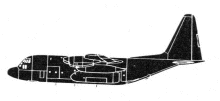Incident Overview

Description
A de Havilland Canada DHC-8-200 operated by Air Greenland was involved in a gear collapse and runway excursion accident at Ilulissat Airport (JAV), Greenland. Flight GL-3205 originated in Kangerlussuaq, Greenland. Three passengers were taken to the hospital for observation, there were no fatalities or serious injuries. On initial radio contact with Ilulissat AFIS, the flight crew got the information that runway 07 was in use. Weather information showed wind from 150ø magnetic at 24 knots, maximum 33 knots, minimum 17 knots; a 24 knots cross wind, and a headwind of 5 knots. The wind at threshold runway 25 was gusting to 41 knots. Visibility was fine (10 km) with broken clouds at 12000 feet. The flight crew got visual contact with the Ilulissat area and due to the wind conditions and consequently expected turbulence on final, the flight crew prepared for a NDB/DME approach to runway 07 via JV NDB. Due to the cross wind conditions, the flight crew decided to do a landing with a flap setting of 15ø. The flight crew asked Ilulissat AFIS for a confirmation of whether or not the cross winds of 24 knots included the gusting wind conditions up to maximum 33 knots. Ilulissat AFIS replied that the maximum wind was 35 knots and the cross wind was 26 knots. On a 5 miles final to runway 07, the wind conditions were reported to be 140ø magnetic at 28 knots with a maximum of 35 knots and a cross wind of 26 knots. On short final to runway 07, the wind conditions were reported to 140ø magnetic and 25 knots, maximum to 39 knots. Upon touchdown on runway 07, the left main landing gear collapsed. With the left main landing collapsed and after approximately 104 meters of runway rolling, the flight crew started to loose aircraft directional control. After approximately 389 meters, the aircraft ran off the left side of the runway and into the safety zone. The aircraft skidded sideways, hit the Precision Approach Path Indicator (PAPI) to runway 25, skidded down a steep slope and impacted a rocky area approximately 10 meters below the runway elevation. The crew members initiated an evacuation of the aircraft. The flight crew found the flight deck door jammed and evacuated the flight deck through the flight compartment emergency exit hatch. The cabin crew member and a passenger had difficulties opening a partly jammed main entrance door. In cooperation with the commander from the outside of the aircraft, they succeeded. From the outside of the aircraft, the commander opened the forward right hand cabin emergency exit door. The passengers and the cabin crew member evacuated the passenger cabin trough the main entrance door. The overall evacuation took approximately 30-40 seconds. Ilulissat Airport has a single, 07/25 asphalt runway, 845 m (2772 ft) long. Runway 07 has a 0,8% downslope for the first 550 m, followed by a 0,2% upslope for 295 m. Conclusion: Adverse crosswind conditions at BGJN led to flight crew target fixation, a flight crew divergence from the operator’s stabilized approach parameters and a mental blocking of an appropriate decision on going around. The flight crew divergence from the operator’s stabilized approach parameters induced a non-stabilized approach, which in combination with power levers retarded below flight idle in flight resulted in an accelerated rate of descent leading to a hard landing, with side load on the left main landing gear at touchdown. The left main landing gear structural fuse pin sheared as a result of lateral and vertical overload stress. Cycling the power levers between ground and flight range prevented an appropriate deceleration of the aircraft and prolonged the landing roll. The prolonged landing roll combined with the application of full left rudder and no decisive use of reverse thrust on the side with the unaffected main landing gear made it impossible for the flight crew to maintain directional control. The lack of directional control resulted in the aircraft running off the side of the runway and the safety zone, respectively.
Source of Information
http://www.airgreenland.com/about/news/dash-8-af-banen-i-jav-(1)http://www.airgreenland.com/about/news/dash-8-af-banen-i-jav-(1)Primary Cause
Adverse crosswind conditions at BGJN significantly impacted aircraft stability and control, leading to a loss of situational awareness and a divergence from the operator’s stabilized approach parameters.Adverse crosswind conditions at BGJN significantly impacted aircraft stability and control, leading to a loss of situational awareness and a divergence from the operator’s stabilized approach parameters.Share on:





